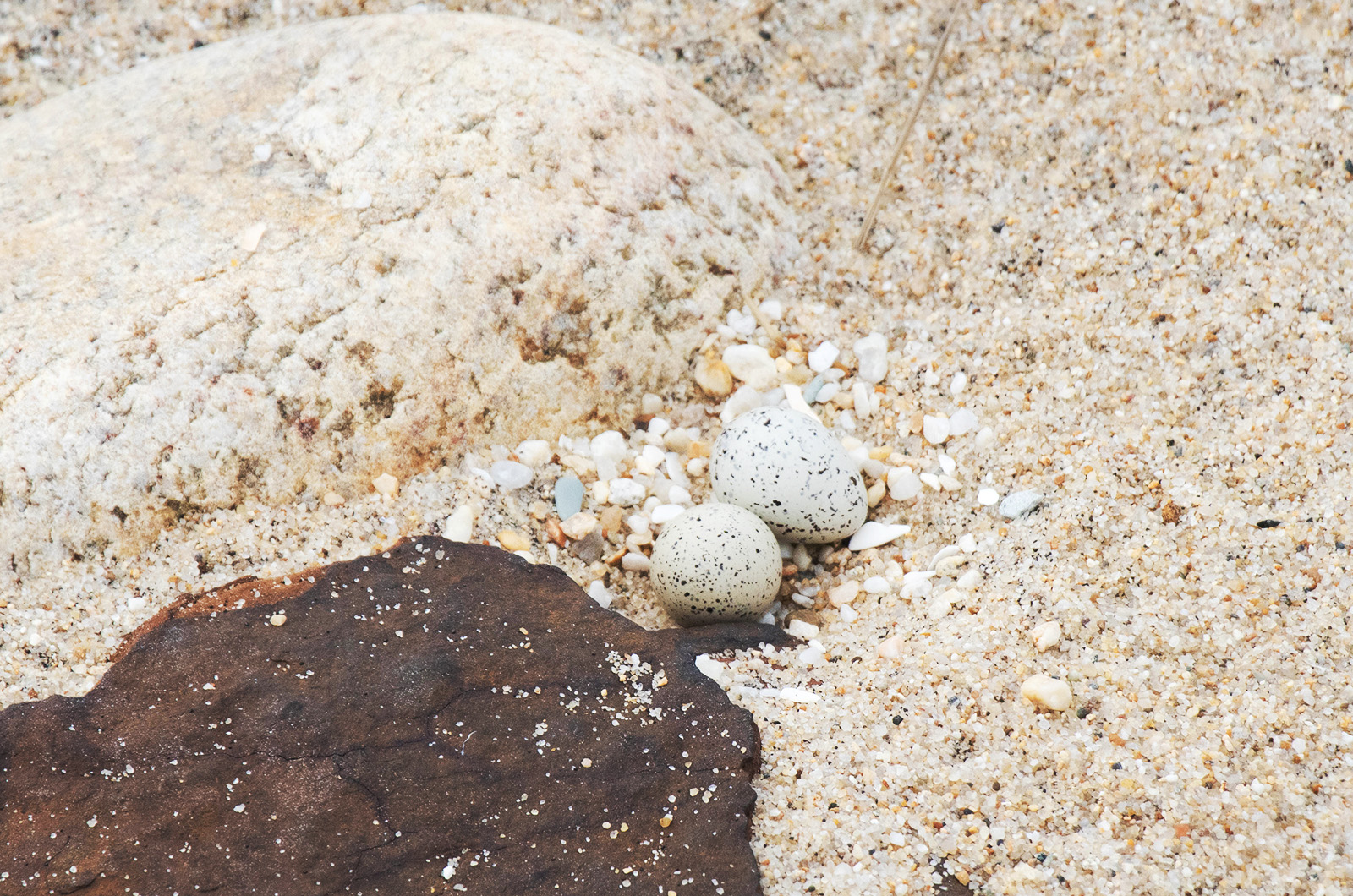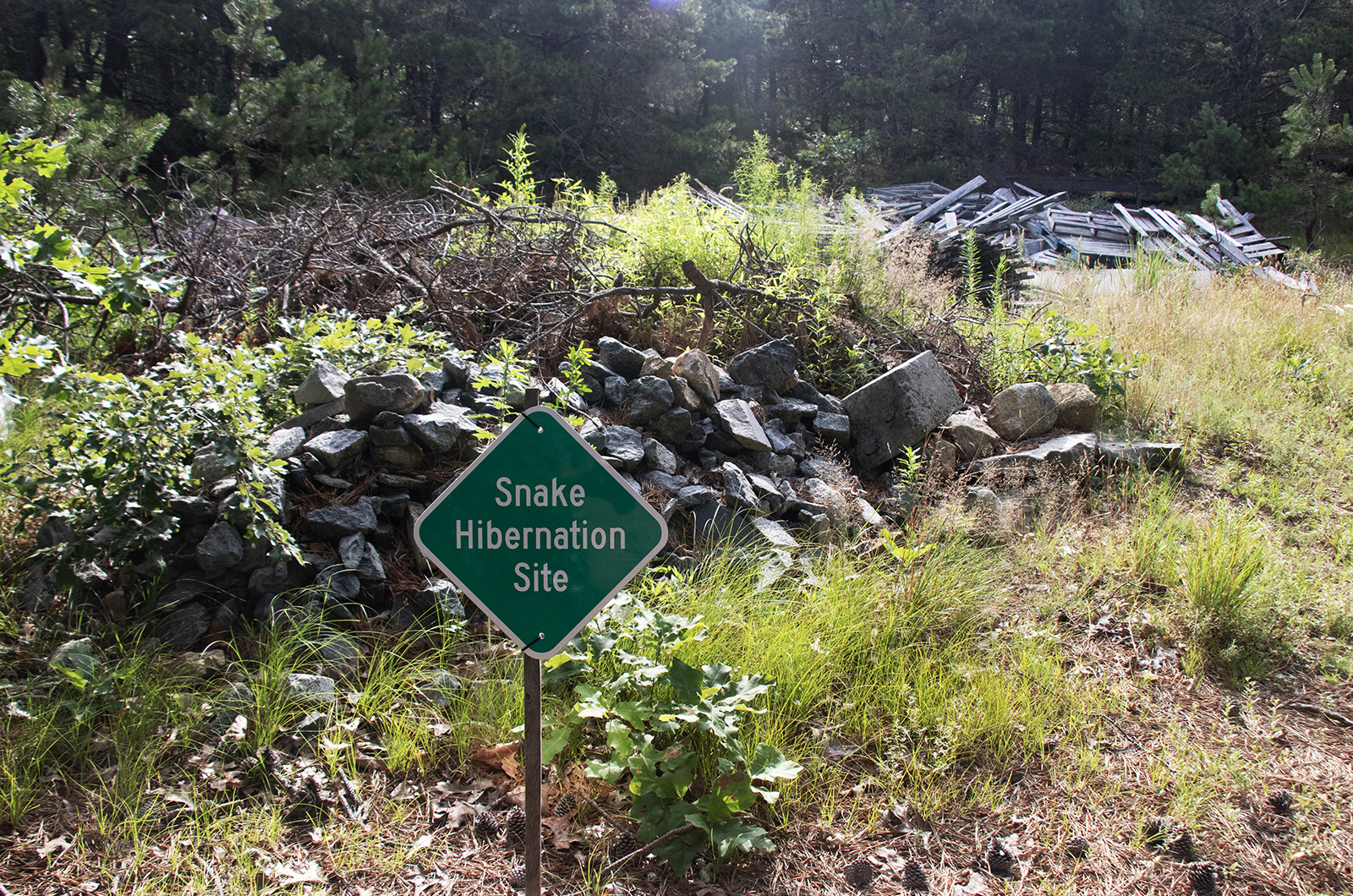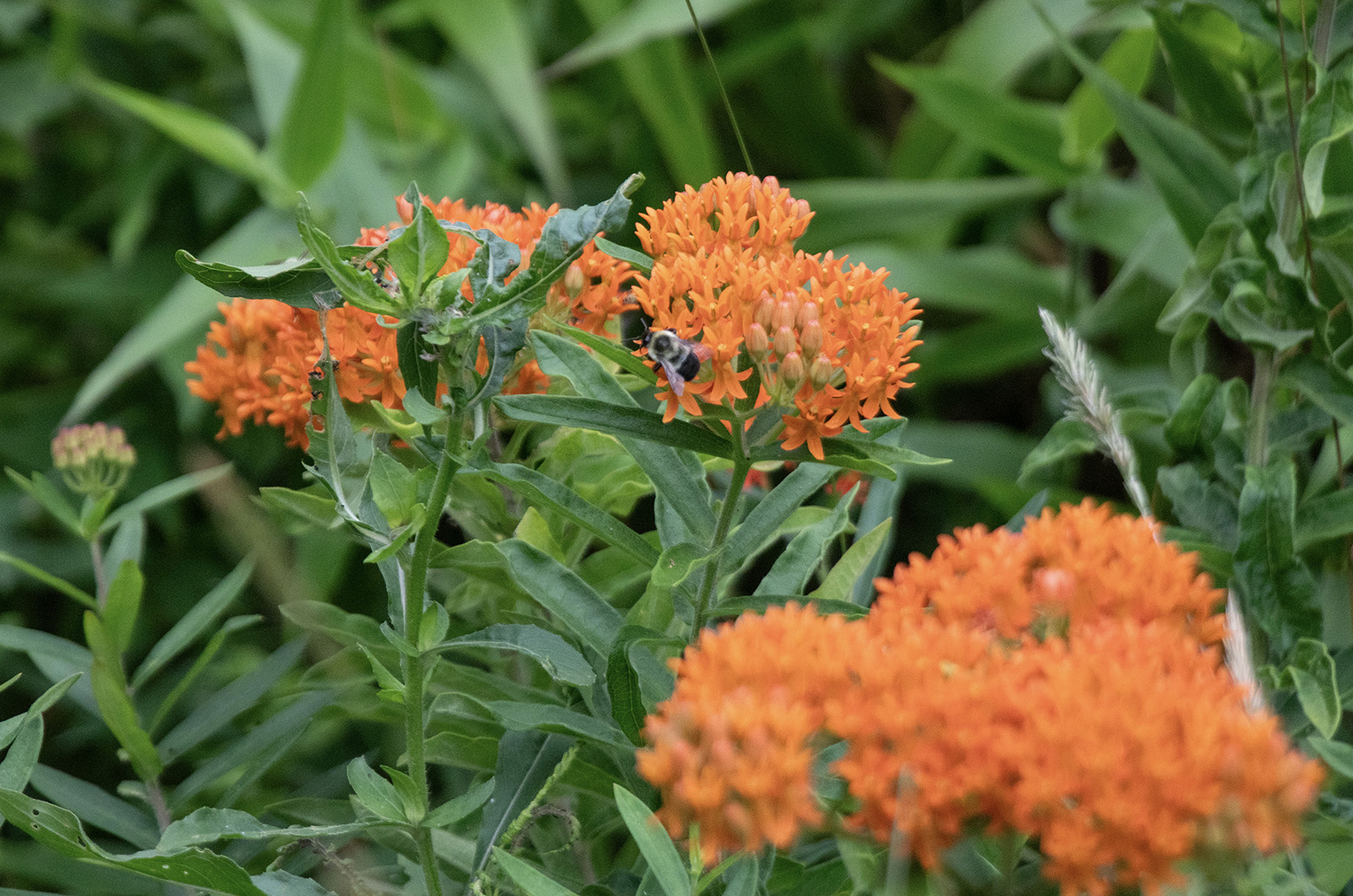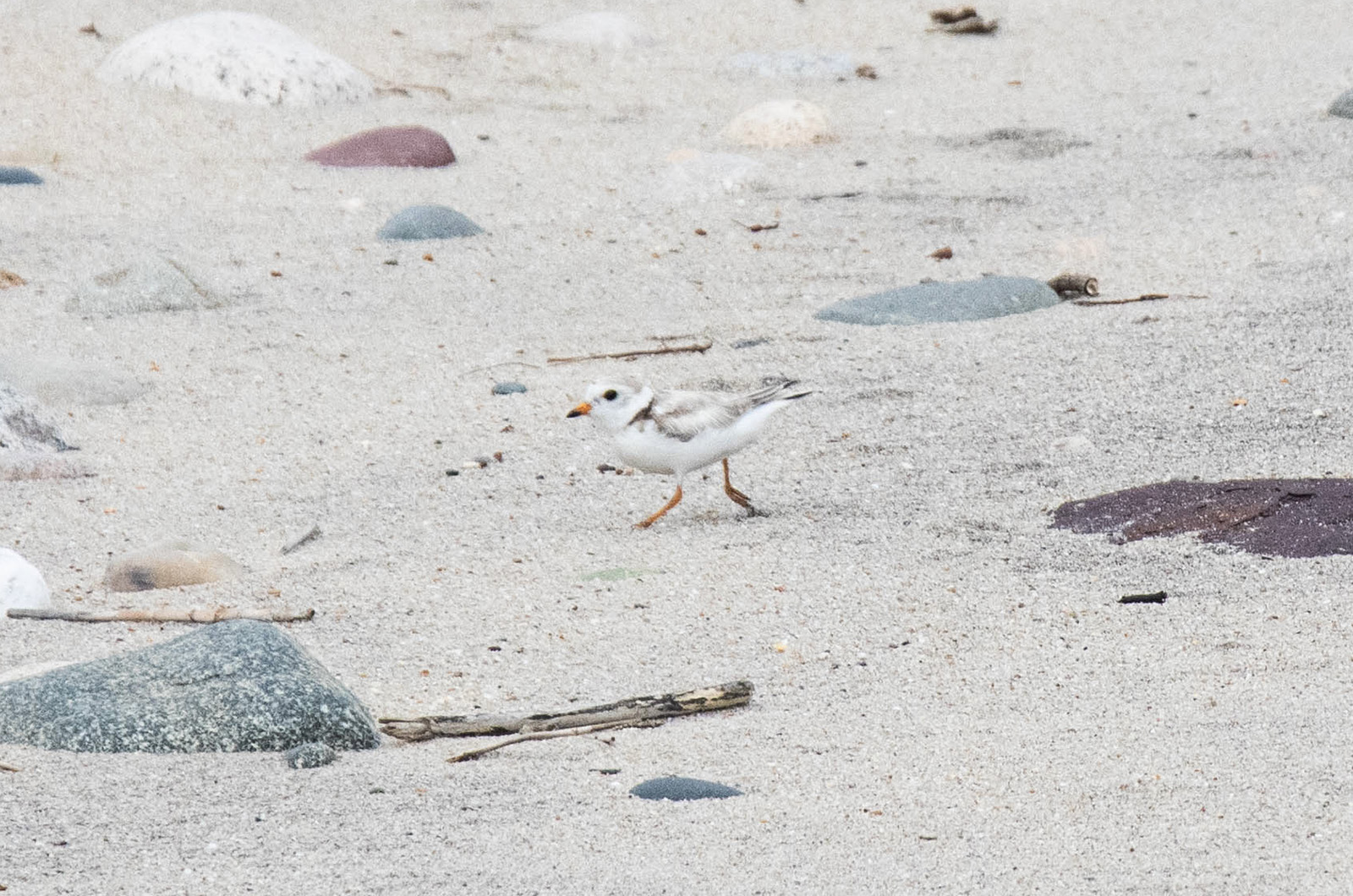On a recent morning, a hush fell over a group of three BiodiversityWorks employees as they listened for the soft chirps of a piping plover on the shore of Lucy Vincent beach.
Wildlife technician Silas Beers had spotted the piping plover a few days earlier and located its nest. Two eggs, no bigger than the tip of a thumb, were nestled in between two clay rocks.
Working against time, the group extended a 10-foot long metal screen around the nest to protect it while the male plover ran around frantically. The enclosure had holes big enough for the tiny bird to slip in and out of, but small enough to keep hungry crows and unleashed dogs away from the eggs.
After the predator enclosure was installed, the group quickly backed away.
“I always think that’s a funny conversation when she gets back,” Mr. Beers said when he noticed the female bird had joined her mate and the two ventured into their newly protected home.
Protecting piping plover nests is just one element in BiodiversityWorks’ busy schedule. This summer alone, the Island’s naturalist hub is monitoring beach nesting and bird conservation at 17 beaches, researching both the decline and resurgence of the little brown bat and northern long-eared bat populations, keeping watch over five breeding basins for the elusive eastern spadefoot (a type of toad), as well as checking on the two hibernacula (winter resting places) the organization created for black racer snakes at Long Point Wildlife refuge.
Luanne Johnson co-founded BiodiversityWorks in 2011. She summed up the organization’s mission as being dedicated to researching and protecting the Islands native species.
All of the local flora and fauna are high priorities for BiodiversityWorks, but at the top of the list are the most endangered. The Island is home to eight species of snakes, none of them poisonous. The largest species, the black racer, can grow up to five feet in length. During summer, when the roads are busy, they are often run over, particularly near Katama Beach in Edgartown and Moshup trail in Aquinnah.
While the snakes are not yet classified as a species of concern by the state of Massachusetts, Ms. Johnson said she is fearful they might end up on the list soon.
The organization has placed cameras in many spots around the Island aimed at tracking the black racer habitats so they can potentially build road underpasses for the snakes. BiodiversityWorks is also advising gardeners to avoid using netting and sticky traps, since the snakes can get stuck in the nets and die.
Bats are also a high priority species for BiodiversityWorks and for years there has been a drumbeat of bad news due to white-nose syndrome, which has been devastating to bat populations everywhere.
White-nose syndrome thrives in cold, damp places such as caves and mines where bats hibernate. The disease causes bats to wake up during hibernation and therefore need food to survive. However, during winter there is typically no food to be found, and the temperatures are too cold for the bats.
Recently, though, Ms. Johnson said that the organization has discovered that bats on the Island aren’t dying from the disease as much as in other areas of the country since winters on the Island are now increasingly shorter and more mild. Although this climate shift has large implications for all manner of species, including humans, for local bats it could be beneficial.
The team has been collecting bat guano and measuring its cortisol levels in an effort to better understand the disease. But since bats only have one pup a year, it’s going to take a long time to revive the population.
“Every bat is really precious,” Ms. Johnson said.
In addition to its fulltime employees, BiodiversityWorks has a vast volunteer network and is always looking to create more citizen-scientists, or at least concerned citizens of nature. A new initiative launched this summer is focused on promoting the use of native plants in lawns. Ms. Johnson said the organization is creating a list of colorful and low-maintenance native plants that Island nurseries and landscapers can suggest to their clients.
“We’re trying to get people to be less attached to their green turf lawns,” Ms. Johnson said. “Your yard could become a stepping stone for habitat.”
BiodiversityWorks will consult with individual homeowners, ask how much of their yard they use and offer suggestions on where to put native plants.
The organization is also partnering with the Betsy and Jesse Fink Family Foundation to bring native pollinator plots to eight Island farms.
Matt Pelikan, director of the Atlas of Life Project at BiodiversityWorks, said they are finishing their final year of the Martha’s Vineyard Pollinator Pathway Project, and have identified over 200 species that have responded positively to native plants.
“Farmers are interested in not just minimizing negative impacts, but actively making their farms beneficial for the wildlife,” Mr. Pelikan said. “They’re particularly interested in some of the less common, more specialized bees.”
BiodiversityWorks uses a program called iNaturalist to track and identify the species they find on the Island. Ms. Johnson said the public is able to participate, and oftentimes people will take pictures of the wildlife they see, upload them and the Island’s naturalists will help identify the species.
Ms. Johnson sees the busy summer season as an opportunity to inform the public about local wildlife that, although often out of sight, must coexist with humans on vacation.
“When you’re more connected to nature, then you understand those impacts and think about them more,” Ms. Johnson said.











Comments
Comment policy »